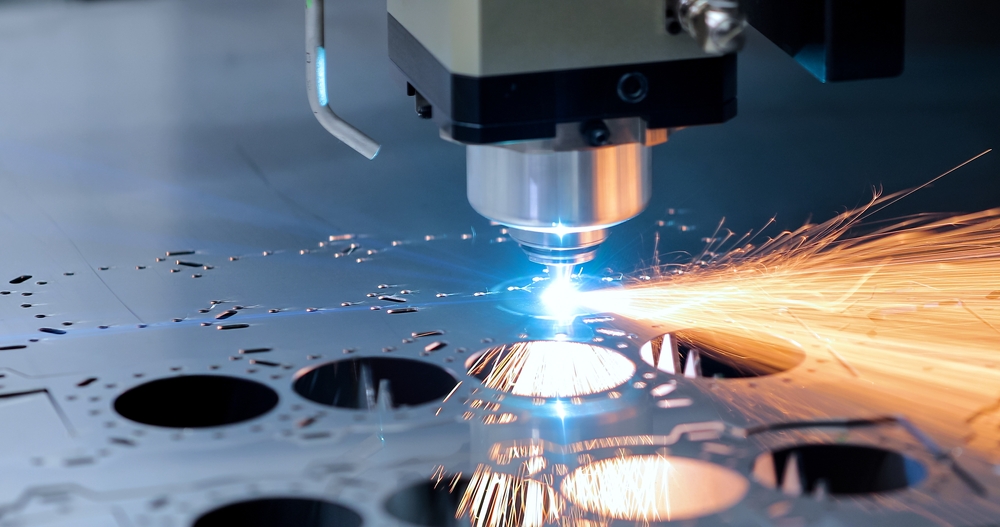4 Common Techniques Used in the Metal Laser Cutting Industry
While the dance of sparks upon metal might hold some similar truths, the process of cutting metal has undergone serious changes in recent years. Central to this revolution is the introduction of several innovative metal laser cutting and manipulation techniques, including the use of MIG welding gas and a CNC folding machine. These tools offer new capabilities that translate into greater precision and faster time to delivery, not to mention designs that were once incredibly difficult – if not impossible – to fabricate.
In this article, our specialists at KNS Metals will journey further into how a metal laser cutter and other similar tools can assist in a variety of applications.
The Power of the Metal Laser Cutter
A metal laser cutter has dramatically reshaped the industry. Unlike placing a piece of metal through a bandsaw, steel and aluminium laser cutting utilises a highly concentrated beam of light, separating the metal along a predetermined path and delivering impeccable accuracy. Where once incredible skill was still shaken by human error and unaccommodating tools, the metal laser cutter ensures even the most complex designs are now possible. Benefits include:
- Ultimate Precision: Unlike traditional methods, laser cutters deliver extremely precise cuts.
- Rapid Speed: The rapid cutting process ensures higher productivity, allowing ample time for all tasks, such as turret punching or time in a CNC folding machine.
- Increased Flexibility: From intricate designs to basic shapes, the possibilities with a metal laser cutter are endless.
Benefits of Steel and Aluminium Laser Cutting
Both steel and aluminium are cornerstones of the metal industry. Their unique properties make them integral for a plethora of applications. Laser cutting, adapted for these metals, further amplifies their benefits:
Material Properties:
Steel: Renowned for its strength and durability, steel can be tough to work with using traditional methods. However, laser cutting allows for precision cuts without compromising the integrity of the metal
Aluminium: Lightweight yet robust, aluminium’s appeal lies in its versatility. Laser cutting ensures it maintains its structural advantages while allowing for intricate designs.
Clean Finishes: Laser cutting minimises burrs and deformities, resulting in smoother edges, which is particularly vital for aesthetic projects or components that fit into larger assemblies.
Efficiency and Speed: Given the unique properties of both metals, laser cutting ensures faster cuts compared to other methods. This translates to reduced production times and increased throughput.
Flexibility in Design: Laser cutting technology, when employed on steel and aluminium, allows for a broader range of design possibilities – from basic geometries to more intricate patterns and profiles.
Economic Benefits: The precision of laser cutting means reduced wastage. Furthermore, as the process is swift and requires fewer tool changes or adjustments, it often results in cost savings.
Techniques Used in Metal Laser Cutting
1. Central Pierce Strategy
The Central Pierce Strategy, previously known as merging pierce points, is an innovative approach to metal laser cutting where the initial piercing serves as the central starting point. This central pierce acts as a nucleus, permitting the laser to branch out, cut a segment, and return to its origin. Subsequently, the laser advances to craft another part, leveraging the pre-established piercing point.
2. Shared-Edge Technique
The Shared-Edge Technique, formerly known as common-line cutting (CLC), involves strategically positioning components so that they have a mutual boundary with the adjoining parts. This approach ensures that a single laser action serves where typically two actions would be needed. Thanks to the kerf compensation, components maintain their dimensional precision, ensuring minimal to no material wastage, and making future tasks like turret punching or manipulation with a CNC folding machine.
3. Rapid Beam Cutting
Also known by many as fly cutting, Rapid Beam Cutting is an accelerated steel or aluminium laser cutting procedure. It’s particularly effective for creating a series of squares or rectangles, where all sides undergo cutting seamlessly without the need for slowing down or tweaking the z-axis. This efficiency stems from the laser beam’s ability to switch on and off swiftly, eliminating the need for repetitive rises and plunges of the head.
4. Tabbed Laser Cutting
Tabbed Laser purposefully leaves small tabs along the cutting trajectory, allowing for manual bending of parts followed by welding, ensuring all segments remain united in the correct alignment. The end result? A self-aligned assembly that streamlines the entire fabrication process.
Learn More On the Benefits of Metal Laser Cutting in Melbourne & Perth with KNS Metals
KNS Metals has long been offering laser cutting services across Melbourne’s thriving industrial scene, and has now extended to Perth, positioning ourselves as a global leader in the industry. If you would like to learn more about the benefits of steel and aluminium laser cutting, contact us today.


